Vegan Globetrotter is supported by our audience. When you purchase through one of our links, we may earn a small affiliate commission. As an Amazon Associate I earn from qualifying purchases. Your cost is not affected.
==================
The energy consumption of induction vs. electric cooktops is a major deciding factor for environmentally conscious cooks. While both offer a modern cooking experience, understanding the key differences between these technologies can significantly impact your energy bills and cooking efficiency. This in-depth analysis will delve into the science behind each cooktop, explore their operational costs and environmental impact, and guide you towards making an informed decision for your kitchen.
Energy Consumption of Induction vs. Electric Cooktops: An In-Depth Analysis
When deciding on a cooktop for your kitchen, you’re not only choosing how to prepare your meals but also impacting your home’s energy consumption. Induction and electric cooktops stand out as popular choices, each with a distinct operating mechanism and energy profile.
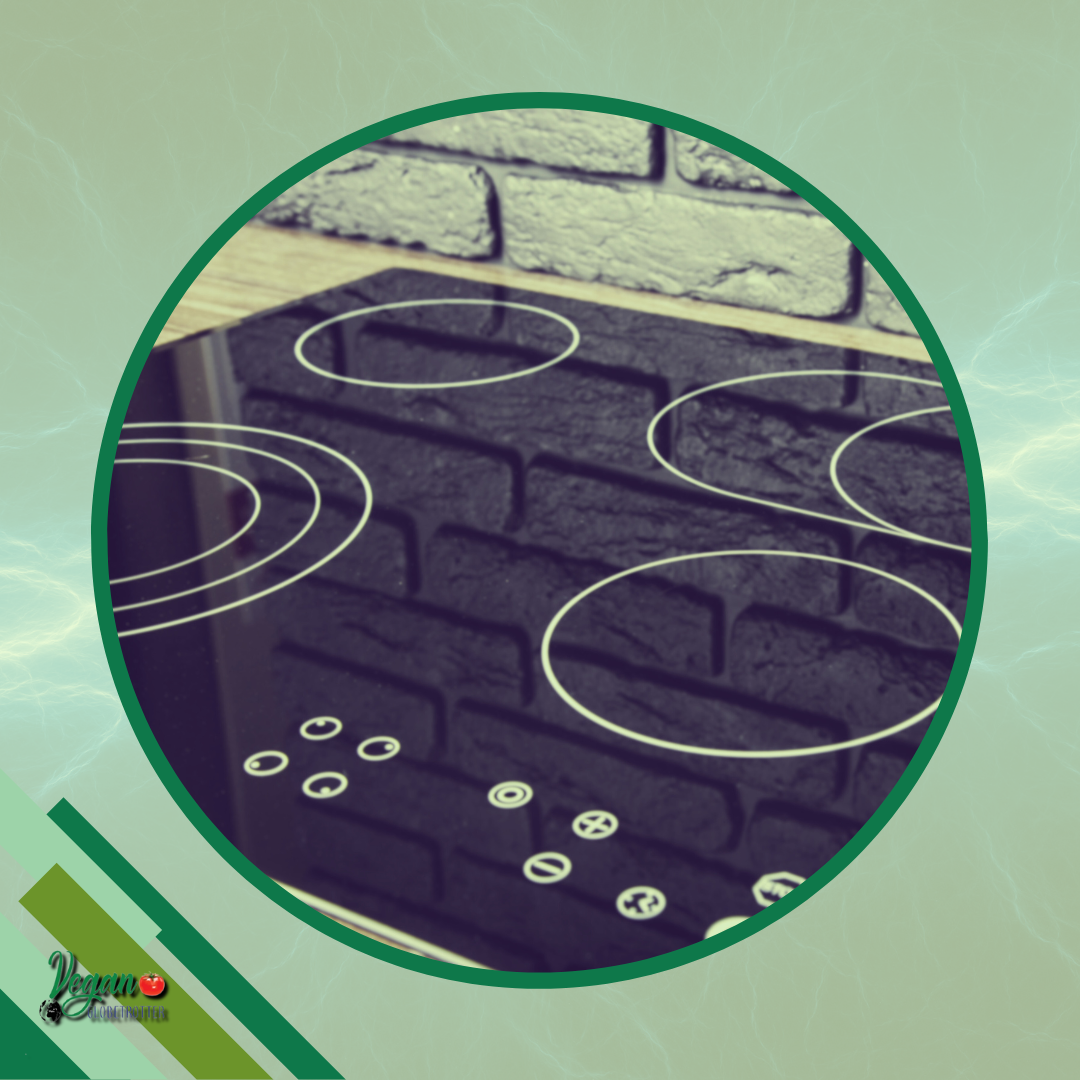
Induction cooktops utilize electromagnetic fields to directly heat pots and pans, boasting increased energy efficiency through reduced heat waste.
Electric cooktops, on the other hand, generate heat through electrical resistance and are valued for their simplicity and lower upfront costs.
Energy consumption is a critical factor in determining the long-term value and environmental impact of your cooktop.
Induction cookers are faster and more energy-efficient as they transfer a greater percentage of energy directly to the cookware, while electric coil cooktops involve more indirect heating of the cooking surface, leading to energy loss.
Your cooktop’s energy consumption patterns influence not only your utility bills but also contribute to your household’s carbon footprint, making it a decision with both personal and environmental implications.
Key Takeaways
- Induction cooktops offer enhanced energy efficiency by directly heating cookware.
- Electric cooktops have lower initial costs but may lead to higher long-term energy use.
- Your choice of cooktop affects both operational costs and environmental impact.
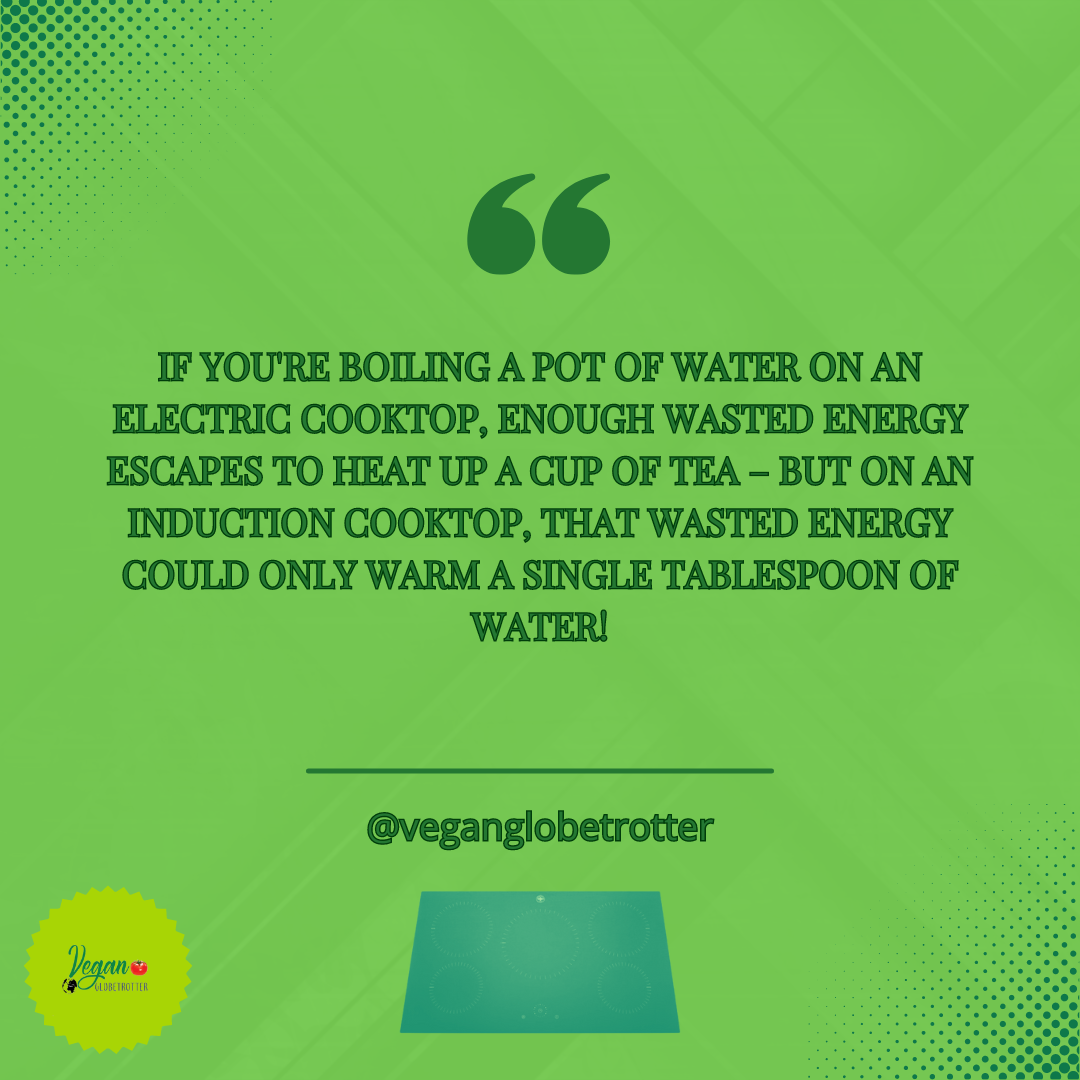
Overview of Cooking Technologies
When you consider upgrading your kitchen appliances, it’s essential to understand the differences between induction and electric cooktops. Both have their unique energy consumption patterns, relying on distinct technologies to generate heat.
Induction Cooktops use electromagnetic fields to directly heat your cookware. Below the ceramic surface is a copper coil which, when an electric current passes through, creates a magnetic field. This field interacts with your magnetic-based pots and pans, causing them to heat up. The stove itself stays relatively cool, leading to a safer cooking environment and less waste of heat energy.
- Pros:
- Quick heating
- Precise temperature control
- Energy-efficient (direct heating)
- Cons:
- Typically more expensive
- Requires induction-compatible cookware
Electric Cooktops, on the other hand, use electric resistance to generate heat. An electric current runs through the metal coils situated under the glass or ceramic surface, emitting heat that warms up your cookware by direct contact.
- Pros:
- Lower initial cost compared to induction
- Compatible with all cookware types
- Cons:
- Slower heat-up times
- Less energy-efficient (some heat is lost to the environment)
Your choice between these two may be influenced by your cooking habits, budget, and energy efficiency preferences. It’s clear that each technology offers different benefits and understanding these will help you make an informed decision for your kitchen.
Principles of Induction Cooking
Induction cooktops operate on a fundamentally different principle than traditional electric cooktops. Your induction cooktop utilizes electromagnetic fields to directly heat your pots and pans rather than heating the cooktop surface itself.
Here’s a breakdown of how it works:
- Underlying Technology: Beneath the glass-ceramic surface of an induction cooktop lies a copper coil. When you turn on the cooktop, an alternating electric current flows through this coil, creating a dynamic magnetic field.
- Interaction with Cookware: When you place a pot or pan made of ferromagnetic material, such as cast iron or some stainless steels, on the cooktop, the magnetic field induces numerous small electric currents in the cookware’s metal.
- Heat Generation: These currents, known as eddy currents, generate heat due to the resistance of the metal. Consequently, it is the cookware itself that heats up, not the cooktop surface. This results in efficient heat transfer and more consistent cooking temperatures.

Consider the following advantages of induction cooking due to its unique principles:
- Efficiency: Energy is transferred directly to the cookware, minimizing heat loss and making it more energy-efficient compared to electric cooktops.
- Control: You gain precise control over cooking temperature. Changes in power settings are nearly instantaneous, similar to gas cooktops.
- Safety: The cooktop surface remains relatively cool, limiting the risk of burn injuries.
To fully benefit from your induction cooktop, use cookware with a magnetic base. If a magnet sticks to the bottom of your pots and pans, they’re compatible with your induction cooktop, ensuring optimal performance.
Principles of Electric Coil Cooking
In electric coil cooktops, electricity powers metal coils beneath the cooktop surface. When you turn on the cooktop, electric current heats these coils, which then transfer heat to the pan placed on top.
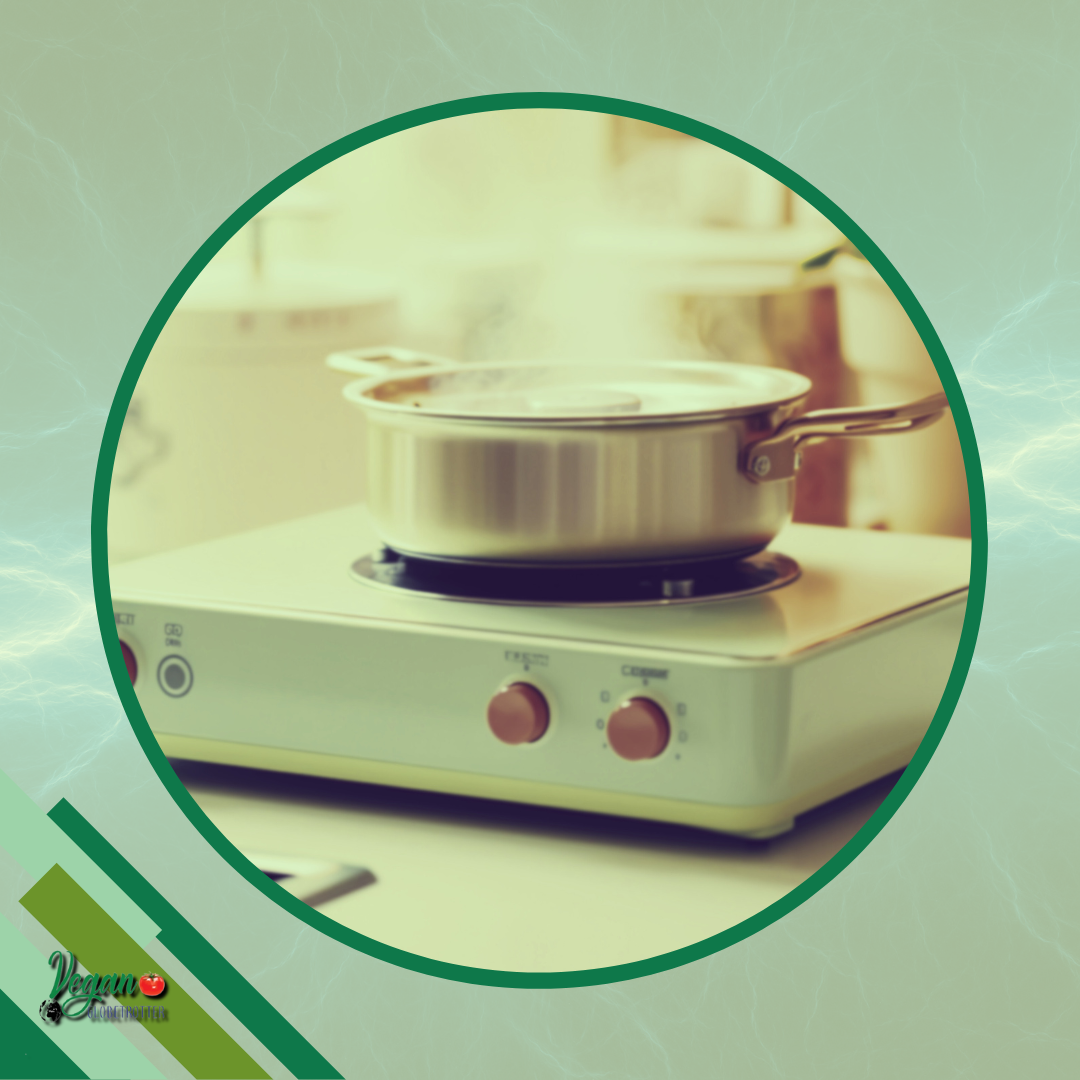
Key Components:
- Coil: Spiral metal elements that heat up when electricity passes through them.
- Drip Pan: A tray underneath the coil, designed to catch spills or drips.
- Indicator Light: Signals when the surface is hot.
How It Works:
- Flow of Current: When you adjust the dial, electricity flows at a regulated intensity.
- Heat Production: As the current runs through the coil, resistance generates heat.
- Heat Transfer: The cookware absorbs the heat from the glowing red coil, cooking your food.
Important Considerations:
- Cookware: Must have a flat bottom to make good contact with the coils for even heating.
- Response Time: Coils may take a few moments to respond to changes in the temperature setting.
- Cleanliness: Drip pans and coils require regular cleaning to maintain efficiency and aesthetics.
Remember, your cooktop efficiency can vary based on the material and condition of your cookware. For example, stainless steel pots and pans with a flat bottom are ideal for achieving a uniform heat distribution.
Comparative Energy Efficiency
When considering the energy consumption of cooktops, you might find the comparison between induction and electric models particularly relevant. Your choice can significantly impact your energy bills and cooking efficiency.
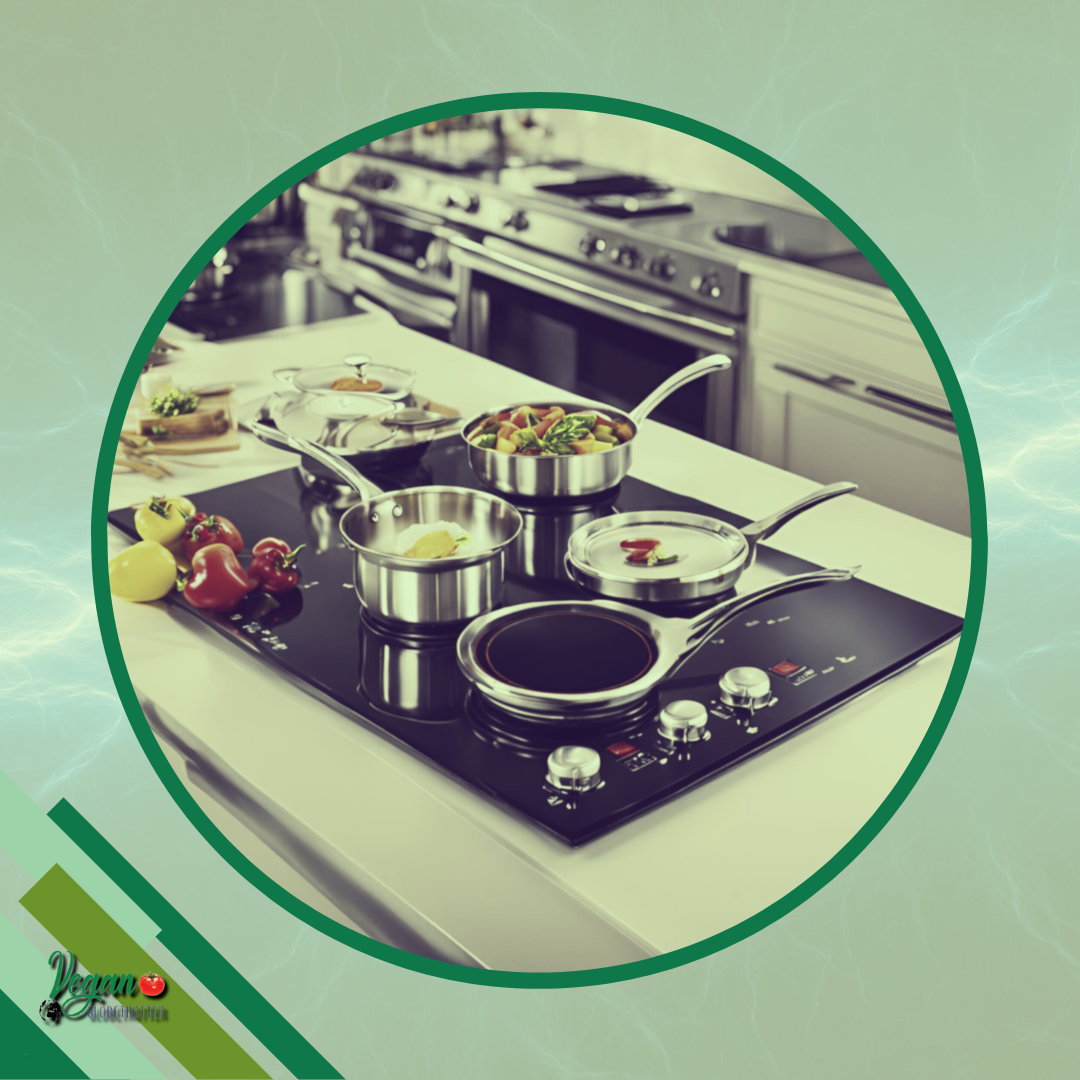
- Induction cooktops are generally more energy-efficient than their electric counterparts. They use a magnetic field to directly heat your cookware, which means energy is transferred directly and very little is wasted.
- Electric cooktops, on the other hand, heat the cooking element which then transfers the heat to the cookware. This process results in more energy loss as heat dissipates into the air.
Here’s a quick breakdown of their efficiency levels:
| Cooktop Type | Efficiency Rate |
|---|---|
| Induction | ~84% |
| Electric | ~74% |
The percentage indicates how much of the energy consumed is actually used to cook, with induction cooktops utilizing around 84% of the electricity for cooking compared to about 74% for electric cooktops.
Moreover, it’s important to note that induction cooktops respond faster than electric cooktops when adjusting temperatures. The precision control that induction technology offers means that your cooking can be more consistent and potentially lower your energy usage even further due to less overcooking and reduced cooking times.
Heat Generation and Transfer
When you use an induction cooktop, the heat is produced through electromagnetic fields. This process begins with a copper coil under the cooktop surface that, when powered, creates an electromagnetic field. The magnetic cookware you place on the cooktop captures this energy, turning it directly into heat. Hence, the cookware itself becomes the heat source, leading to a more efficient cooking process.
By contrast, electric cooktops generate heat by running electricity through metal coils situated under the ceramic or glass surface. The heat from these coils then transfers to the cookware by direct contact. This process involves two stages of heat transfer: from the coil to the cooktop surface, and then from the surface to the cookware.
Key Differences:
- Direct Contact: Electric cooktops heat cookware through direct contact with a heated surface.
- Magnetic Field: Induction cooktops use a magnetic field to heat cookware directly.
Induction cooktops are notably more energy-efficient than electric cooktops. This is because the cookware heats up quickly and the energy is concentrated. As a result, this not only saves energy but also reduces the ambient heat in the kitchen.
With electric cooktops, there is a higher energy loss since more stages are involved in transferring heat. Energy is not only used to heat the cookware but also to maintain a hot cooking surface. This can lead to more wasted energy and a hotter cooking environment.
Control and Precision in Cooking
When you’re in the kitchen, control and precision can mean the difference between a meal that’s just okay and one that’s exceptional.
Induction cooktops are renowned for providing superior control over cooking temperatures. Your induction cooktop operates with electromagnetic energy, creating a quick response to your input. This means when you adjust the temperature, the change is almost immediate.
On the other hand, traditional electric cooktops can take some time to adjust to a new temperature setting. This slight delay can affect the precision with which you cook sensitive ingredients.
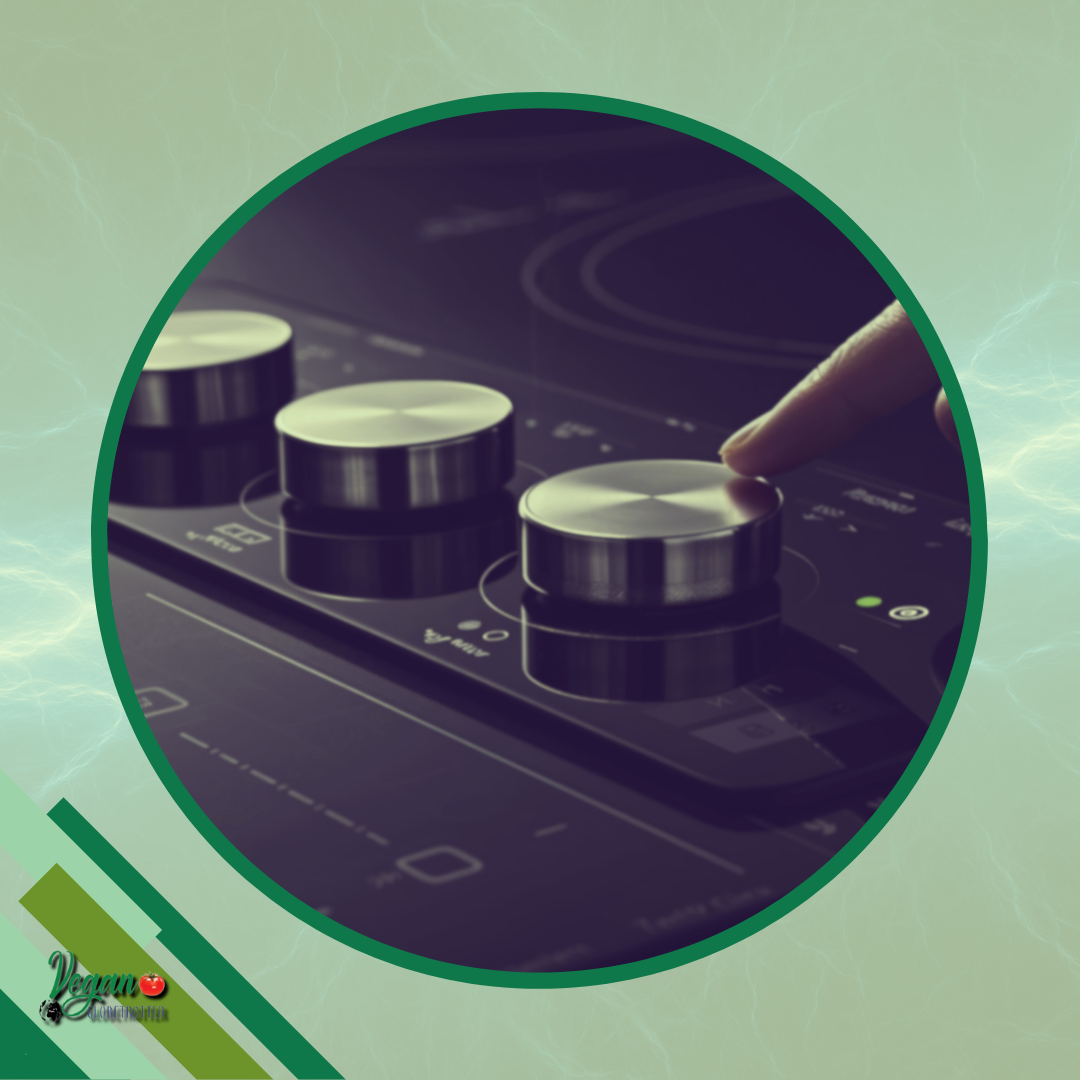
Here’s a comparison to give you a clearer picture:
- Response Time: Induction is faster. With an electric cooktop, you wait for the coil to heat up or cool down.
- Temperature Control: Induction allows for precise temperature changes, pivotal for delicate tasks like melting chocolate or simmering sauces.
To harness the precision benefits of induction cooking, you’ll need cookware that is compatible with your induction cooktop. This is because it requires a ferrous (magnetic) base to function.
However, induction technology might take a little time to get used to. The speed and responsiveness are much quicker than what you might be accustomed to with electric cooktops. To get the best results, start by using lower heat settings than you think you’ll need. Then, gradually adjust as you become more comfortable with the cooktop’s performance.
The Impact of Cookware Choices
When selecting cookware for induction cooktops, your choices significantly impact energy consumption patterns.
Induction cooktops require pots and pans with a magnetic base, which is typically ferrous metal like cast iron or some varieties of stainless steel. The electromagnetic field produced by the induction coil interacts directly with the cookware, causing it to heat up rapidly. As such, the cookware itself becomes the heat source, leading to more efficient cooking and energy use. Energy Star states that this direct heat transfer means there’s less heat loss compared to other methods.
In contrast, cookware choice is less critical for electric cooktops. Here, heat is generated by electric elements and then transferred to the cookware. Any material that can withstand the heat will technically work, but some are better conductors than others. For maximum efficiency on an electric cooktop, you want cookware with good heat conduction properties, such as copper-bottomed pans.
Consider the following when choosing cookware:
- For Induction:
- Must contain magnetic material
- Flat-bottomed for maximum contact with the cooktop
- Heavier pots may improve performance
- For Electric:
- Heavier cookware provides more even heat distribution
- Materials that retain heat well will improve cooking efficiency
When you use induction-compatible cookware on induction cooktops, you also benefit from a safer cooking environment. This is because only the pot or pan heats up, not the cooktop’s surface.
With electric cooktops, you have more flexibility in cookware choices, but you trade off some energy for that convenience. Your cookware choices, therefore, have a direct correlation with the energy efficiency and overall functionality of your cooktop.
Operational Cost Analysis
When evaluating the operational costs of induction and electric cooktops, it’s essential to consider both the purchase price and the long-term energy consumption.
Induction cooktops, though initially more expensive, generally lead to lower utility bills over time.
Initial Costs:
- Induction cooktops: Higher purchase price due to advanced technology
- Electric cooktops: Lower purchase price; more budget-friendly upfront
Energy Efficiency:
- Induction cooktops are approximately 80% to 85% energy efficient.
- Electric cooktops typically range between 65% and 75% energy efficiency.
Energy Consumption per Year (in kilowatt-hours, kWh):
| Cooktop Type | Average Usage (kWh) |
|---|---|
| Induction | 300 – 400 |
| Electric | 400 – 500 |
Operating Costs:
To calculate your annual operating expenses, multiply your local cost per kWh by the average usage for the cooktop type. For example, if your cost is $0.12 per kWh, your annual expense would be:
- Induction: 300 kWh * $0.12 = $36
- Electric: 500 kWh * $0.12 = $60
Your costs will vary based on local electricity prices and your personal usage patterns.
Induction cooktops can lead to energy savings of 10-50% compared to conventional electric cooktops, as highlighted by experts like Rena Awada.
Remember, these savings will accrue over time, potentially offsetting the higher initial investment in an induction cooktop. Your choice should align with your cooking preferences and financial priorities.
Environmental Considerations
When assessing the environmental impact of cooktops, you must consider energy efficiency as a key factor.
Induction cooktops are known for their high energy efficiency. They typically convert around 84% of their energy directly to heat in the pan.
Contrast this with electric cooktops (both coil and smooth-top), which usually boast an efficiency of about 74%.
Induction units work by generating a magnetic field, which directly heats your cookware. This means less wasted energy and faster heating times. For instance, induction cooktops can boil water significantly faster than their electric or even gas counterparts.
To understand the energy savings, consider these points:
- Heat-up Time: Induction cooktops require less time to heat up, reducing the amount of energy used.
- Direct Energy Transfer: Energy is transferred directly to the cookware on an induction cooktop, minimizing heat loss.
- Automatic Pan Recognition: Induction cooktops only heat up when cookware is present, reducing unnecessary energy use.
In terms of consumed energy, Energy Star reports induction cooktops are about 5% to 10% more efficient than traditional electric stovetops.
As you make your decision on which cooktop to use, factor in how the efficiency of induction cooktops contributes to less energy waste. This not only leads to a reduction in electricity bills but also lowers environmental strain by reducing demand on power plants. This may subsequently lead to a decrease in greenhouse gas emissions.
Installation and Maintenance Requirements
When considering the installation of an induction or electric cooktop, you should keep in mind that each type comes with its own set of requirements for setup and ongoing care.
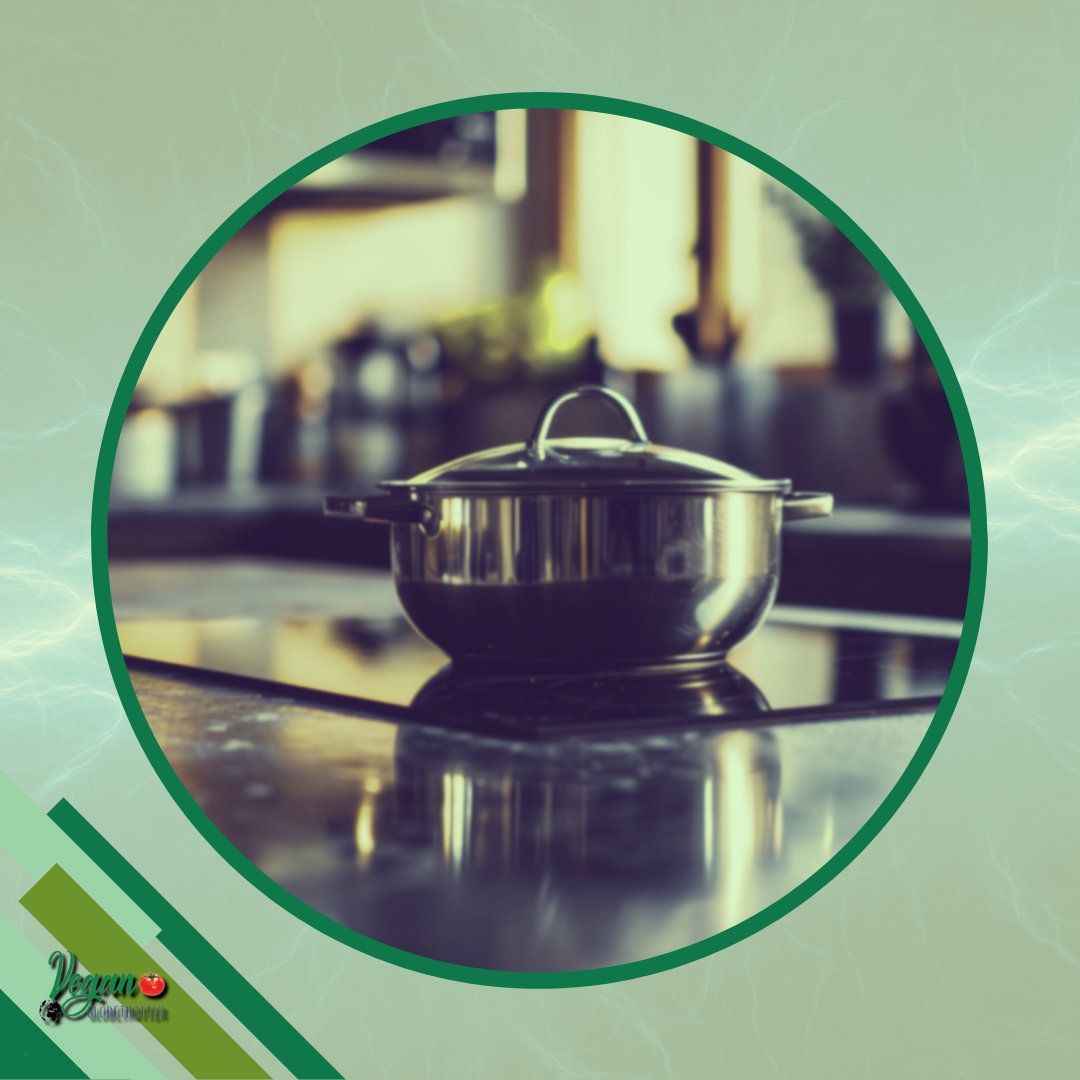
Induction cooktops require a dedicated electrical circuit due to their high power demands. Professional installation is highly recommended to ensure that your home’s electrical system can handle the load.
Moreover, the flat surface of an induction cooktop is relatively easy to clean. However, care must be taken to avoid scratching the glass with abrasive cleaners or rough pads.
For maintenance, use:
- A soft cloth
- Non-abrasive cleaner
Electric cooktops might not require a special circuit if you’re replacing an existing unit, but it’s best to confirm compatibility with an electrician.
Cleaning an electric cooktop involves removing coiled elements in some models, which can be tedious but straightforward.
Key maintenance tips include:
- Always disconnect power before cleaning coiled elements
- Avoid spillage into the receptacles to prevent damage
Both types of cooktops benefit from prompt cleanup after use to prevent buildup and prolong their lifespan.
Never use metal utensils or sharp objects to remove debris. Instead, opt for:
-
- Gentle scraping tools
- Soft sponges
Safety Features and Risk Factors
When comparing induction cooktops and electric cooktops, it’s important to consider the safety features and risk factors associated with each.
Induction Cooktops:
-
-
- Safety: Induction cooktops only heat the cookware itself, rather than the entire cooking surface. This means that the surrounding surface stays considerably cooler, reducing the risk of burns to you or your family members.
- Auto-off: Most induction cooktops come with an auto-off feature that turns the heating off when no pan is detected, adding an extra layer of safety.
- Risk Factors: The electromagnetic fields used to heat cookware could potentially interfere with electronic medical devices, such as pacemakers. You should consult your device manufacturer before using induction cooking.
-
Electric Cooktops:
-
-
- Residual Heat: Electric cooktops remain hot long after the cooking has stopped, posing a burn hazard. However, many models now include heat indicators to alert you when the surface is still hot.
- Spill Response: If liquids spill over, the response time can be slower due to the persistent heat, increasing the potential for injury or further spillage.
-
Consumer Preferences and Market Trends
As you explore the world of cooktops, you’ll find that consumer preferences are shifting toward sustainable and energy-efficient appliances. Particularly, induction cooktops are gaining traction because they’re more energy-efficient than their electric counterparts.
For example, an induction stove is 5 to 10 percent more energy-efficient compared to a conventional electric range.
The market trends echo this preference. The induction cooktop market is projected to grow at a robust CAGR of 8.3% from 2024 to 2034, with its value expected to surpass US$ 49,917.50 million by 2034. This reflects a heightened awareness and concern for energy conservation among consumers.
When examining price points, there’s a noticeable difference. Induction cooktops are generally more expensive upfront, but this cost is often offset by long-term energy savings and faster cooking times.
Additionally, induction units can boil water substantially quicker than electric cooktops, a feature highly prized by home chefs seeking efficiency.
Here are some key points to consider:
-
-
- Induction cooktops significantly reduce energy consumption and cooking time.
- The demand for induction technology in kitchen appliances reflects a growing commitment to environmental sustainability.
- Induction units come with a higher initial cost, but the investment can lead to lower utility bills over time.
-
Regulatory Standards and Compliance
When selecting between induction and electric cooktops, it’s essential to consider regulatory standards and compliance, which can influence your purchasing decision.
Energy Efficiency: Both types of cooktops must meet minimum energy efficiency standards. Induction cooktops are generally more energy-efficient due to their direct heat transfer technology.
The U.S. Department of Energy has finalized cost-saving efficiency standards for cooking products which may impact your choice.
Safety Regulations: In terms of safety, induction cooktops often incorporate safety features like auto shut-off and child lock functions. These features not only comply with safety standards but also enhance the security of your kitchen environment.
Environmental Compliance: If you’re environmentally conscious, you’ll be pleased to know that induction cooktops use less electricity and can contribute to lower household emissions. This aligns with global efforts to reduce energy consumption and the ecological footprint.
To ensure compliance, always check for:
-
-
- The ENERGY STAR certification on both induction and electric models.
- Any additional regulatory endorsements specific to your region.
-
Innovation and Future Prospects
In the realm of kitchen appliances, your options for cooking are constantly evolving, with a significant focus on reducing energy consumption. Induction cooktops are at the forefront of this innovation due to their energy-efficient operations.
They use electromagnetic fields to heat your cookware directly, leading to less energy waste.
In the future, you can expect advancements that further improve induction technology’s energy efficiency. Enhanced features may include:
-
-
- Improved Power Management: Optimizing energy use based on the cookware size and material.
- Smart Connectivity: Integration with home automation systems for better control of cooking times and energy usage.
- Eco-friendly Materials: Use of sustainable materials in the cooktop construction to minimize environmental impact.
-
Additionally, manufacturers are continually exploring ways to reduce the cost of induction cooktops, making them more accessible to a wider audience. They also work towards expanding induction-compatible cookware options, ensuring that you have a diverse selection to choose from.
Energy Consumption of Induction vs. Electric: Choosing the Sustainable Cooktop
This exploration has shed light on the battle of the cooktops: induction versus electric. We’ve seen that induction technology reigns supreme in terms of energy efficiency, thanks to its direct heat transfer and ability to minimize wasted energy. While electric cooktops offer a lower upfront cost, their long-term energy consumption can lead to higher bills and a larger environmental footprint.
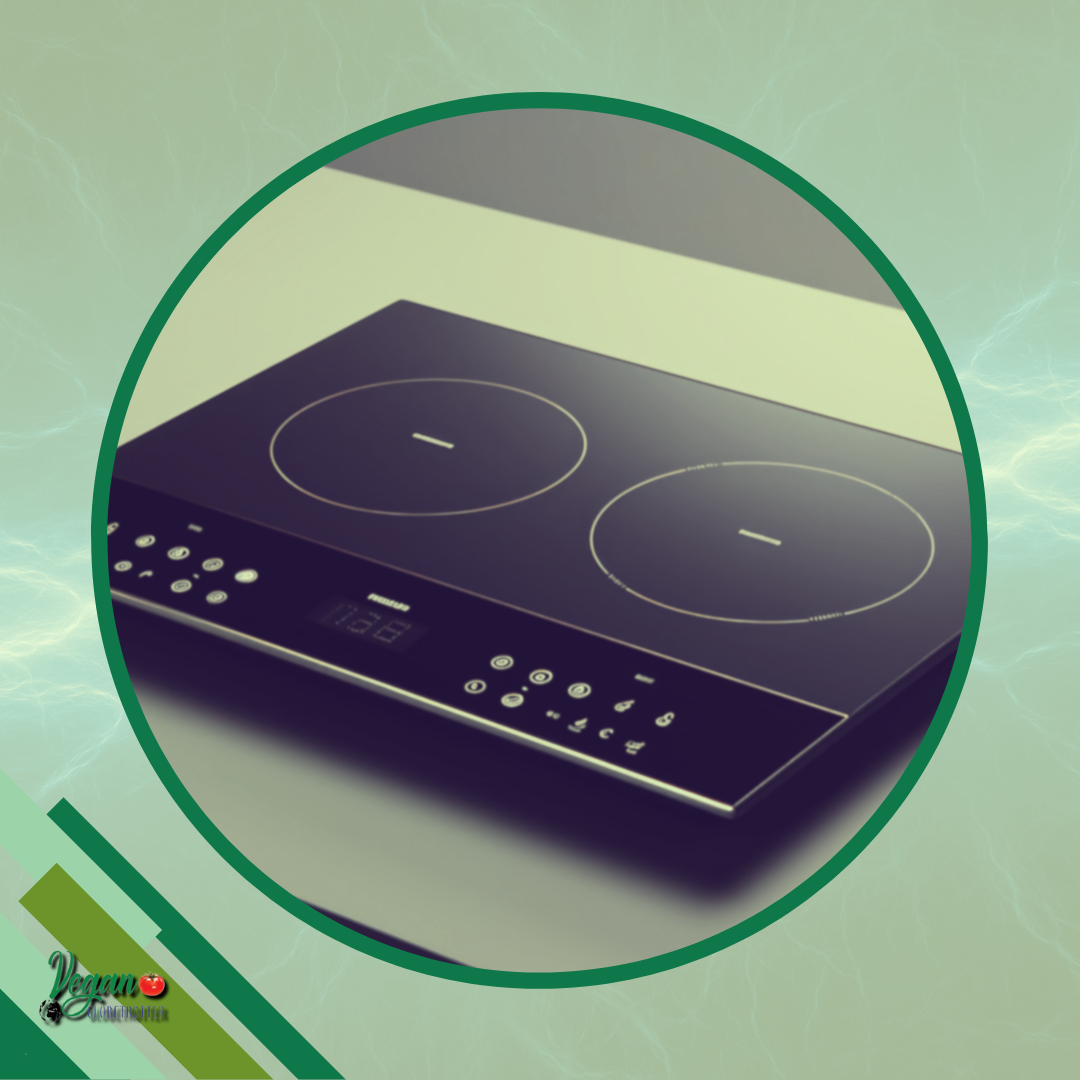
Remember, the decision ultimately boils down to your cooking preferences and budget. If you prioritize speed, precision, and energy savings, induction is the clear winner. However, if you’re on a tight budget and willing to sacrifice some efficiency for affordability, electric cooktops remain a viable option.
So, are you ready to upgrade your kitchen and embrace sustainable cooking? Consider the insights provided in this article, weigh the pros and cons of each technology, and choose the cooktop that best aligns with your culinary needs and environmental values. Happy cooking!
Frequently Asked Questions
In this section, you’ll find precise answers to common inquiries about the energy aspects of induction versus electric cooktops. The details will help you understand the nuances of each cooking technology.
What factors contribute to the energy efficiency of induction cooktops compared to electric cooktops?
Induction cooktops are more energy-efficient due to their use of electromagnetic energy to directly heat cookware, which results in less heat loss. The technology allows for a rapid response and precise control of heat, which significantly improves energy efficiency compared to the resistive heating of electric cooktops.
How do the power consumption rates of induction stoves and traditional hot plates differ?
Induction stoves consume power more efficiently by heating the cookware itself, avoiding the energy wastage seen in traditional hot plates that heat the cooking surface before the cookware. As a result, induction stoves are generally associated with lower power consumption rates.
Are there any cost benefits associated with using induction cookware over standard electric ranges?
You’ll find cost benefits over the long run with induction cookware due to its higher energy efficiency, which can lead to lower utility bills despite the higher initial purchase cost compared to standard electric ranges.
What are the potential disadvantages of using induction stoves for cooking?
Possible drawbacks of induction stoves include their dependency on cookware with magnetic properties, the initial investment being higher than conventional stoves, and potential noise during operation.
How does the energy usage of an induction stove compare to that of a glass top electric stove?
Induction stoves typically boast an 85-percent efficiency rating, making them about five to 10 percent more energy efficient than conventional glass top electric stoves.
In terms of energy consumption, how does an induction stove stand against a standard electric oven?
Induction stoves are superior in energy efficiency. They use, on average, 10-50% less energy than standard electric ovens. This is especially true when considering the individual heating zones and the ability to directly heat the cookware.
Join the Vegan Globetrotter Community!
Dive into a world of vegan wonders with us! Follow our journey and discover engaging content, honest product reviews, and a supportive community passionate about the vegan lifestyle. From the best vegan restaurants to the latest vegan products, we cover it all. Connect, share, and grow with like-minded individuals who love all things vegan!
- Explore and connect on Facebook
- Get inspired with Instagram
- Find unique ideas on Pinterest
- Stay updated with Twitter (X)
- Watch and learn on YouTube
Discover more at veganglobetrotter.com. Join us and be a part of our vegan adventure!

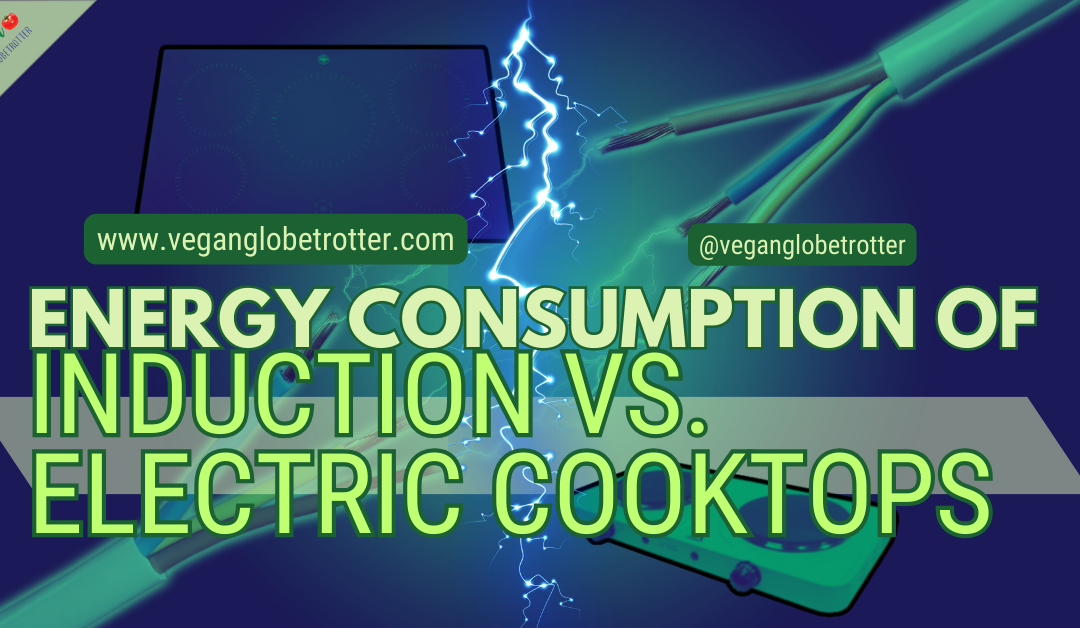

Don't miss out
when new recipes and information are added!
Join our newsletter for free recipes,
healthy living inspiration, and special offers
You have Successfully Subscribed!